Sony A6400 review: Pint-sized mirrorless packs a punch
Sony’s march on the uplands of the mirrorless camera market continues. Not happy with setting the bar unbelievably high for professionals with the A9 and A7, it’s bringing its expertise to bear at the lower end as well.
This month: the Sony A6400, a thousand-pound, 24.2-megapixel camera that supports E-Mount lenses, offers 424 autofocus points and can shoot up to a pro-pleasing 11fps. It’s a mere wisp of a camera as well, allowing advanced photographers to carry plenty of photographic prowess with them even if their backpacks are filled with more pressing essentials.
READ NEXT: The best cameras you can buy
Sony A6400 review: Price and competition
At about £1,300 including the 18-35mm f/2.5-5.6 lens we reviewed it with, or £949 body-only, the A6400 faces some spectacular competition. The newly released Fujifilm X-T30 is a little cheaper, or there’s the Panasonic Lumix G80 , which has a smaller sensor, but is an excellent choice for filmmakers. For those on the fence about a mirrorless camera, there’s plenty to be found elsewhere.
The Nikon D7500 costs a little less, body-only, while the Canon 77D is similarly priced. To emphasise just how tight things are at the thousand-pound mark, even Sony manages to provide competition in the shape of its not-yet-discontinued A7 Mark II , which despite pushing five years old, still provides a full-frame, 24-megapixel sensor. With so many fish in the sea, the A6400 needs to be outstanding.
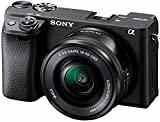


Sony A6400 review: Features and design
It makes a pretty strong start. For one thing, there’s the tantalising spec sheet – the APS-C sensor with 24.2 megapixels might be par for the course, but not much else is. 424 autofocus points, including eye-detection, as well as an 11fps continuous burst mode, make the A6400 a contender for just about any action photographer. More on its video modes later, but suffice to say, XAVC recording in 4K, with S-log available for colourists, means the A6400 continues Sony’s tradition of filmmaking excellence.
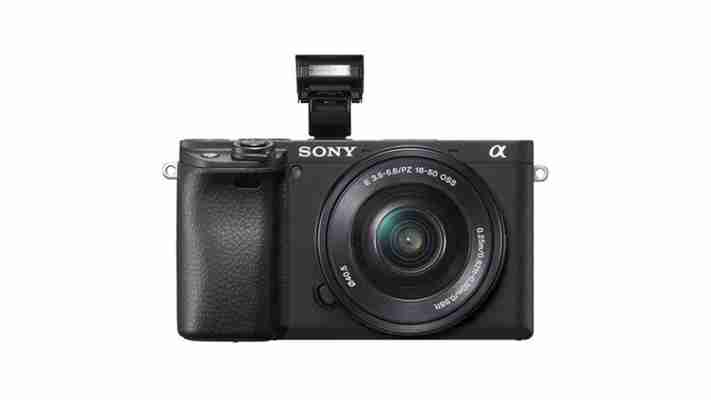
Take the A6400 out of its box and the first thing that strikes you is that for a thousand pounds, you don’t actually get very much camera. That’s a good thing: it weighs just 403g with its battery installed (but no lens) and, at just 120mm wide and 67mm tall, it’s barely any bigger than a high-end compact camera.
Attach a lens and that all changes, of course, but with the 18-135mm f/3.5-5.6 kit lens attached, the A6400 remains a welterweight device, and is easily small and light enough to be added to an expedition backpack without much impact on overall weight. It’s easy to handle – the front grip could stand to be a little deeper, perhaps, but it’s comfortable. It’s well balanced with the kit lens, too.
That said, it’s an E-mount camera, which means that, while you’re welcome to avail yourself of Sony’s small and light consumer lenses, you can add all sorts of glass. At the more obscene end, there’s Sony’s 400mm f/2.8, which is perfect for sports and wildlife photographers with ten grand burning a hole in the pockets of their Duchamp trousers. There are plenty of appealing lenses down the range, such as the £2,000 100-400mm f/4-5.6 telephoto or the £1,200 24-105mm f/4. Sigma’s in on the act as well, with a number of its professional Art lenses available as E-mount units.
Whatever lens you attach, the A6400’s small size belies a fantastically usable camera. A thumbwheel on the back, as well as a dial next to the mode dial, makes using manual modes straightforward. There's no holding down a function button to get at the aperture here – and the four compass points of the thumbwheel act as shortcuts for drive mode, exposure compensation and the display mode of the EVF and rear monitor.
Pretty much all of the buttons can be repurposed to do things other than their defaults, which makes setting up the A6400 simple. The camera itself is pleasingly well constructed: the top and back are built from magnesium alloy and the buttons, while not super-easy to hit if you’re wearing gloves, stick out far enough from the camera’s body to be reachable. It feels like a tough, durable camera.
The monitor itself is a 3in, 921,000-pixel number that can be angled up and down to provide easier framing when shooting at low or high angles. It doesn’t swing outwards but it can face forwards, to the presumed delight of selfie shooters everywhere. The menu system isn’t touch-sensitive but the screen is, allowing you to select an autofocus point with a prod. It also acts as a trackpad when the camera is held to your eye, allowing you to drag the autofocus point around with your thumb. It’s a fantastically intuitive system.
There’s an integrated EVF, positioned on the far left-hand side of the camera. Sony calls it a Tru-Finder, which is a neat pun, and you can opt to run it at either 50 or 100fps, with the latter dubbed “High” quality and theoretically offering better motion handling. In practice, we ran the A6400 in both modes and could barely tell the difference. That aside, the viewfinder is a good one – a 1cm, 2,359,296-pixel unit that was great fun to use. Its off-centre positioning will be unusual to DSLR habitués, but it takes next to no getting used to and frees up the right side of the touchscreen for autofocus repositioning.
Battery life is reasonable rather than outstanding. Rated at 360 shots using the viewfinder, or 410 using the less power-hungry LCD screen, we found the A6400 good for about a day’s worth of relatively intensive photography. Take a merciless approach to the power saving menu and you could probably stretch it out to a few days. It charges via its own USB socket, which leaves you the possibility of recharging it from a power bank but, either way, you’re likely to want some kind of on-the-go power.
Sony A6400 review: Photo quality
Picture quality is excellent. Dynamic range is good, and the A6400 returned sharp, printable images. Left to its own devices, the 1,200-zone evaluative metering system worked well and produced nicely balanced images – although with exposure simulation available in the viewfinder (sorry, Tru-Finder), we found ourselves reaching for the A6400’s manual mode more often than not. Autofocus works well and the excellent coverage of autofocus points, which covers pretty much the entire frame, makes it easy to set up. Those with a penchant for manual focus will find – as with most mirrorless cameras – that the manual focus ring on the lens is a little frustrating to use compared with the precise optics of a DSLR lens, but with both focus point magnification and focus peaking, getting a sharp image manually is simple enough.
One area the A6400 really excels in is its continuous shooting speed. At full throttle, Sony says it shoots 11fps and, in our tests, it shot 44 raw files in a little under four-and-a-half seconds before pausing to buffer – a final speed of 10.2fps. If you’re happy to shoot JPEGs, you can spray with even wilder abandon: the A6400 shot 113 top-quality JPEGs in 10.8 seconds before buffering – a rate of 10.5fps. Both of these top speed results are with the autofocus locked from the first frame and, using tracking autofocus, the best speed we saw in JPEG was a still nippy 8fps. Suffice to say, if action is your jam, the A6400 will keep up just fine.
READ NEXT: The best cameras for vlogging
The A6400 handles higher ISOs nicely, but, inevitably, not as well as the full frame cameras on whose toes it’s hoping to tread. Up to ISO 1600 images were tough to tell apart, although the higher reaches of that range showed a little grain. Add a stop and images at ISO 3200 showed significant noise, and the stop beyond that – and everything beyond – should be considered for emergency use only. The A6400 can shoot ISOs as high as 102,400 so, if you want a camera that produces usable images at anywhere near that kind of sensitivity, we’d suggest looking elsewhere. If you love to shoot in good quality light, though, the A6400 won’t let you down.
Sony A6400 review: Video quality
We expect good things from Sony equipment in terms of video features and quality, but even so we were pleasantly surprised by the way Sony has thrown the kitchen sink at the A6400. Not for this camera the cut-back video features of other consumer gear. Instead, you get XAVC 4K shooting (you’ll need a UHS-I or UHS-II U3 card for this, mind) at 25fps. Alternatively you can shoot Full HD at 25, 50 or 100fps. You can also shoot in-camera proxies and in S-log, making the A6400 a very capable camera for vloggers, or an excellent starter camera for those who want to produce high-quality, flexible video without spending a fortune.
Sony A6400 review: Verdict
A truly excellent camera, the A6400 is likely to tick a lot of boxes when it comes to the wants of photographers everywhere. It’s small enough to be properly portable but with excellent image quality and enough power to keep photographers happy whether they’re shooting static landscapes or ferocious action. The lens library can’t be faulted – particularly for advanced photographers or would-be pros, and the A6400 is very capable when it comes to video.
It’s imperfect, of course. Image quality at high ISOs isn’t quite there (although the A6400 is great in its comfort zone), and battery life could stand to be better. There’s also the competition – if you’re lucky enough to have a grand to spare on a camera, the A6400 is keeping some pretty illustrious company. But for all-round performance, handling and value, the A6400 is – right now – the camera to beat at this price.

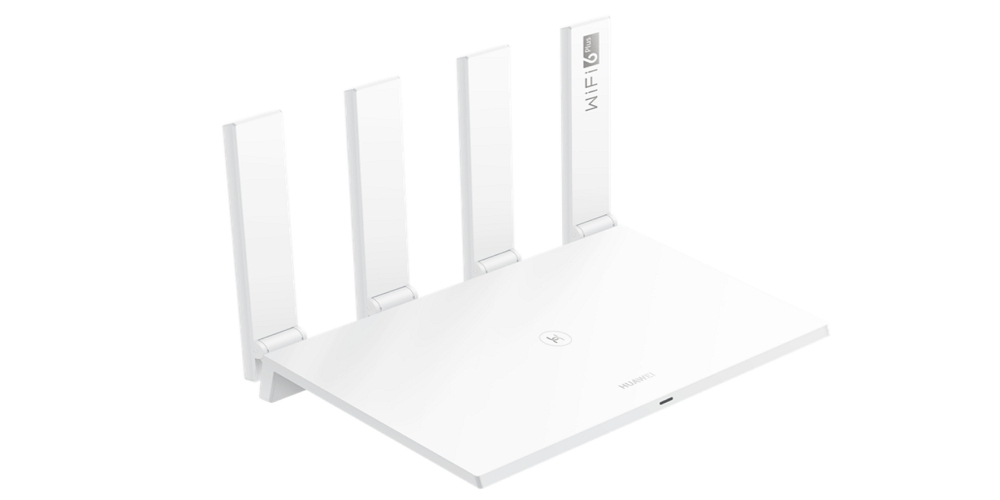
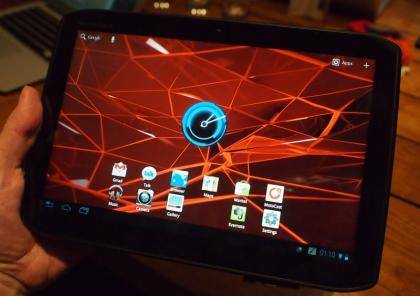
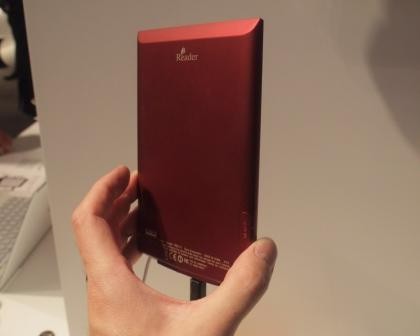
Leave a Comment